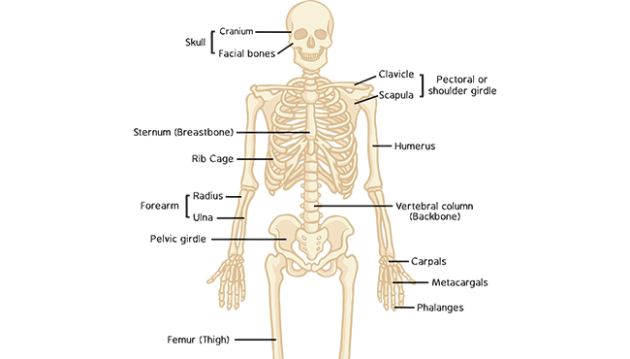

The skeletal system is made up of bones, cartilage, tendons and ligaments. Humans and other vertebrates (mammals, fish, reptiles, amphibians and birds) have bony skeletons. The skeletal system protects the internal organs, allows us to move and supports the structure of the body.


Your child will discover in their Year 3 (ages 7 - 8) science lessons that humans and some other animals have skeletons and muscles for support, protection and movement. They’ll mostly focus on the bones - the biggest part of the system - but might also learn about cartilage, ligaments and tendons. To read about each part of the skeletal system in more detail, check out the Twinkl Teaching Wiki.
Explore the different parts of the human skeleton with this labelled diagram then challenge your child to label their own version. Have fun together building a life size skeleton cut out or try this moving skeleton craft. Having a labelled model to explore is a fantastic way for your child to learn some of the key words associated with the skeletal system. Put their knowledge to the test with this interactive labelling activity or help reinforce the key vocabulary with a word search. Younger children may enjoy making pasta skeletons; you can use this dinosaur pasta craft as inspiration.
Some ingredients and/or materials used might cause allergic reactions or health problems. You should ensure that you are fully aware of the allergies and health conditions of those taking part. If you have any concerns about your own or somebody else’s health or wellbeing, always speak to a qualified health professional. Activities listed within the resource should always be supervised by an appropriate adult. Children should be supervised when using sharp items such as scissors or other tools. Please make sure you are aware that children may put craft items into their mouths, and that they should wash their hands afterwards. By using this resource, you acknowledge that it is the responsibility of supervising adults to ensure the safety of children in their care and that we will accept no liability as a result of the activity.